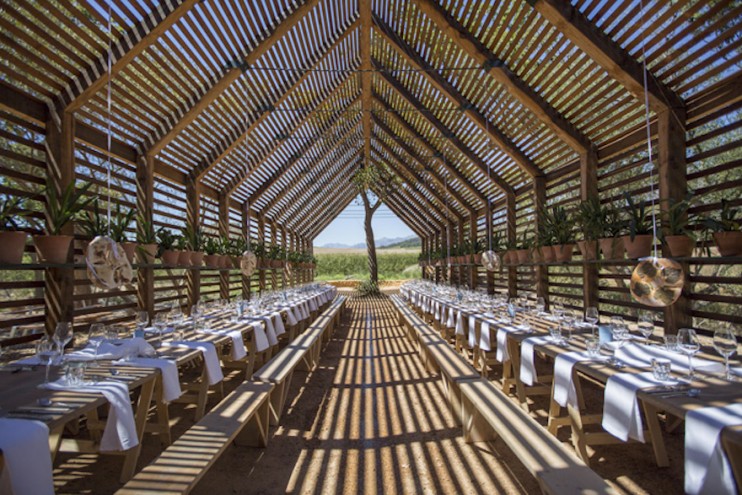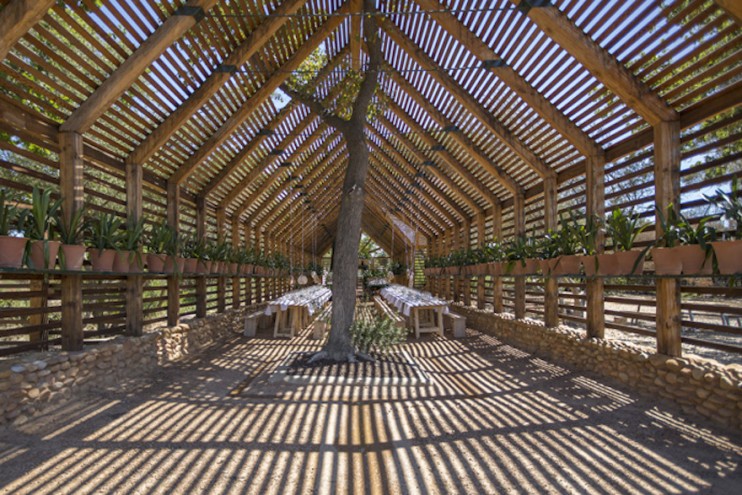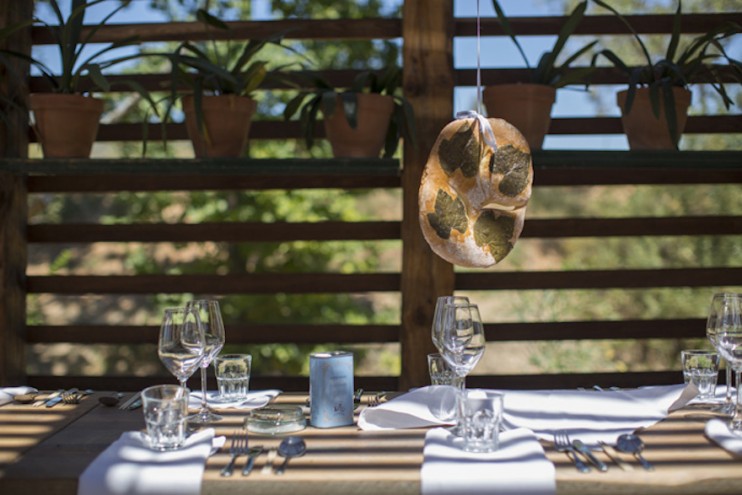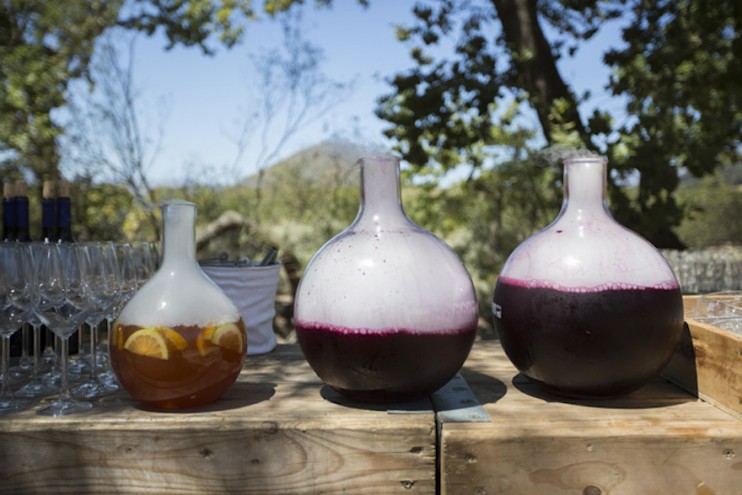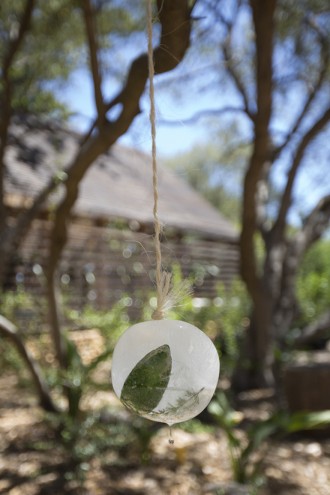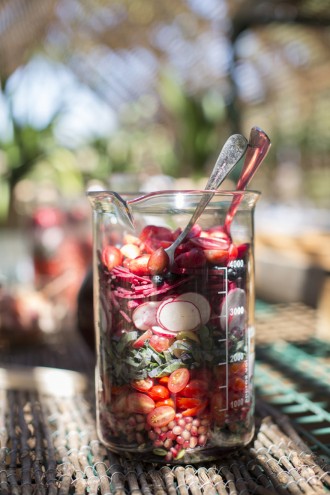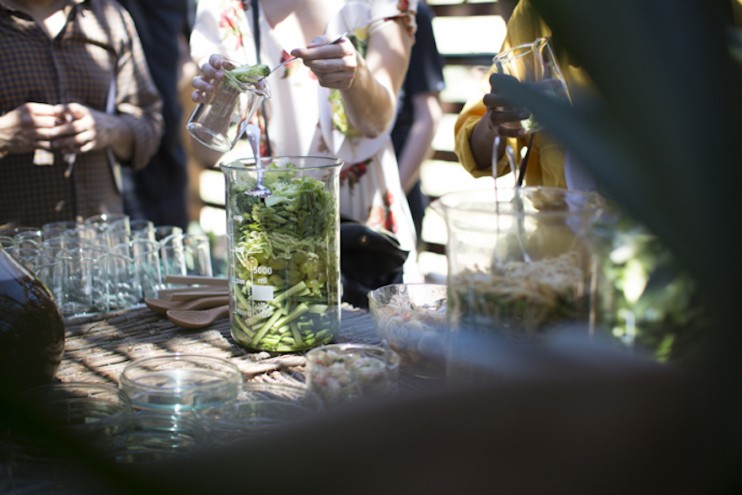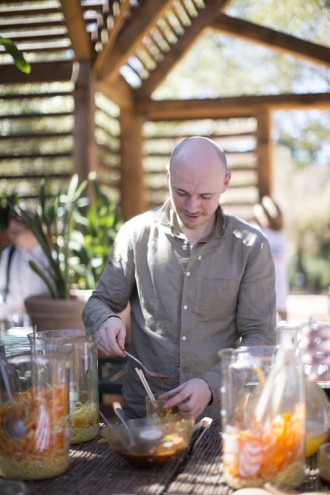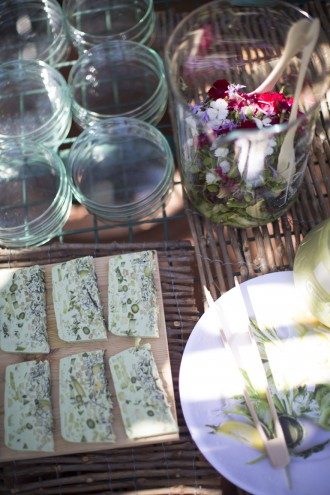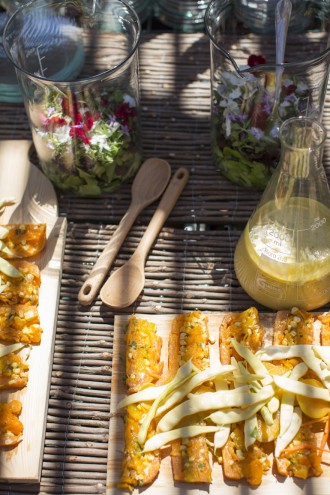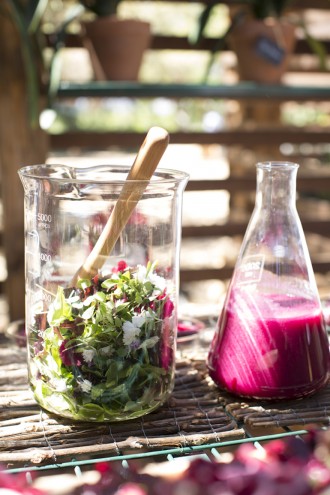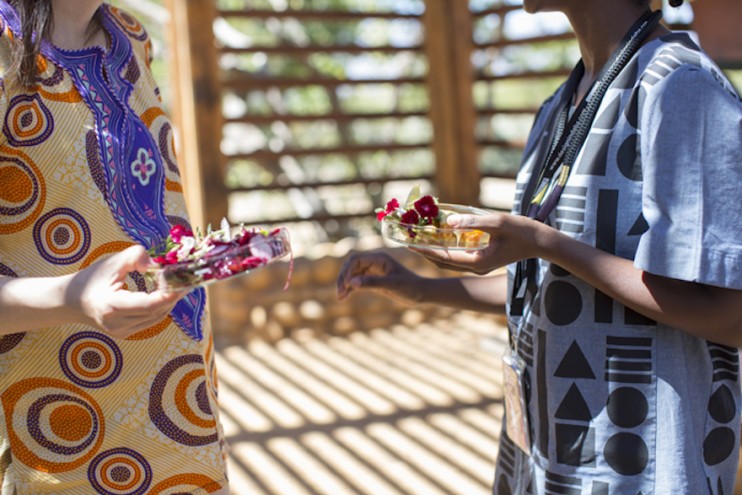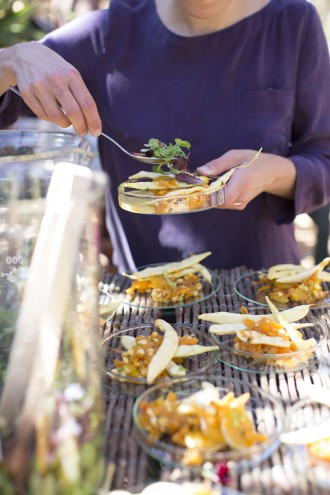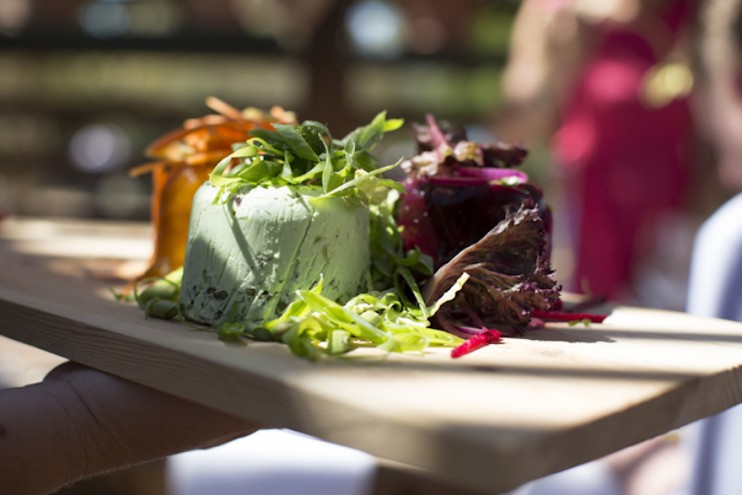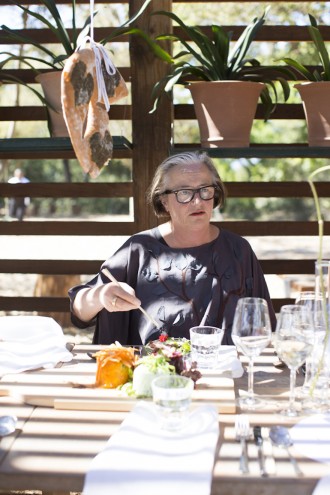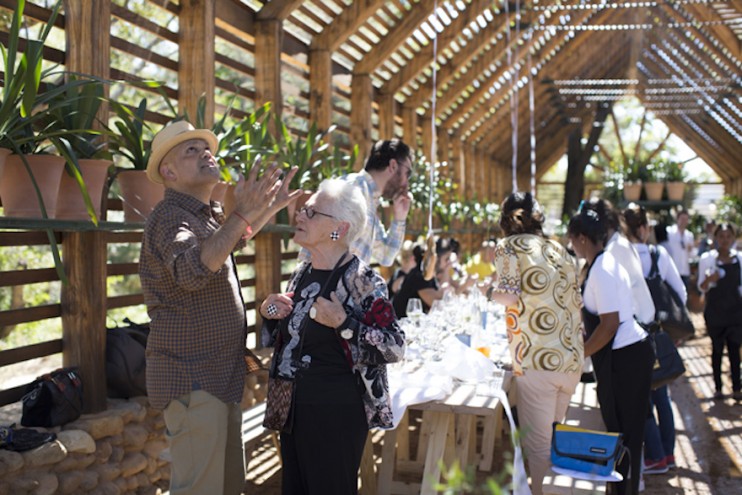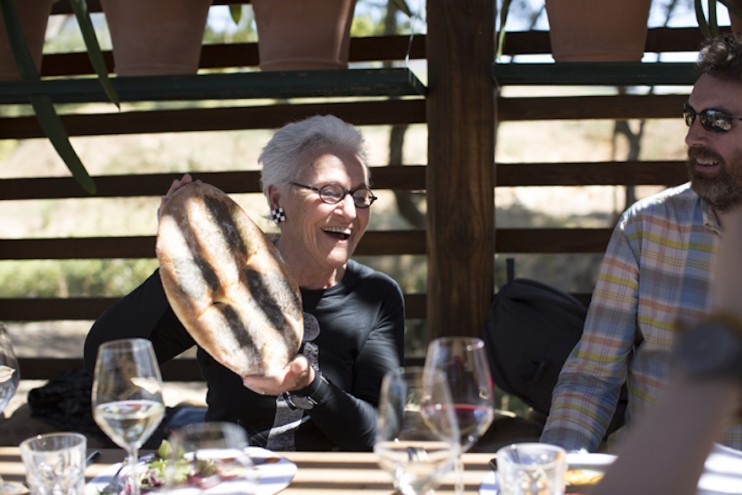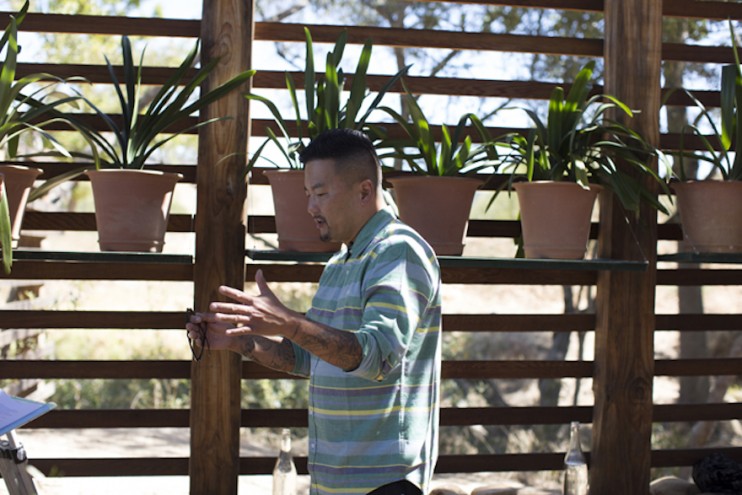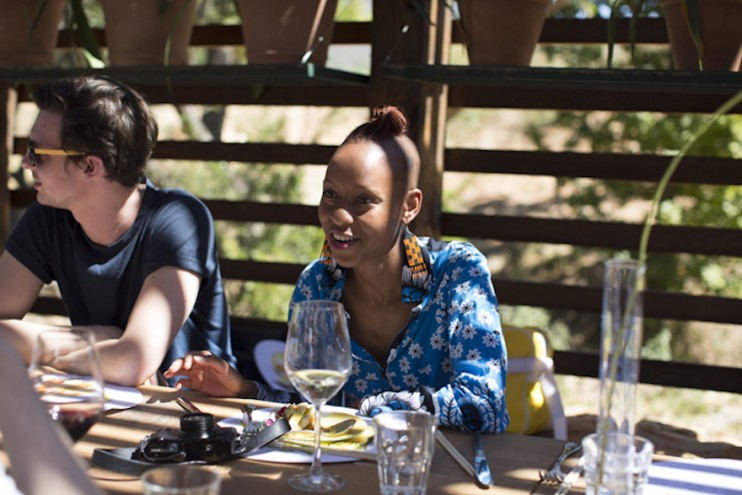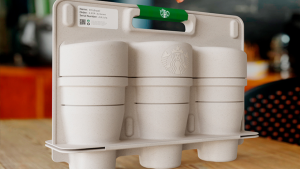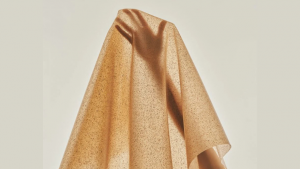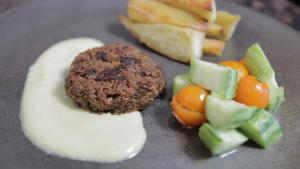A meal is no longer just about putting a plate of food on the table – it is about engaging the human senses, says Babylonstoren’s food stylist Maranda Engelbrecht, who designed an interactive food experience for Design Indaba Conference speakers at the Drakenstein Valley farm.
“The meal was about the smell of the garden, the colours, texures, taste, the physical touch of the food,” says Engelbrecht, whose creative approach to presenting and preparing food has resulted in numerous books and magazine features.
One of Babylonstoren’s signatures is to serve food by colour so upon arrival the guests chose a menu that was yellow, red or green.
“It’s a subtle thing, but people are attracted to certain colours, sometimes depending on their mood. It’s one aspect of eating. And of course each colour has its own meaning and its own nutrition. The yellows contain the healthy carotenes, the reds – berries and beetroots – contain lots of antioxidants, and the greens are all the vitamins.”
Engelbrecht reimagined how food items are usually served, right down to the details. She strung up flatbreads fom the rafters of the shed’s ceiling and hung them over the tables for diners to break chunks off and dip them in oils flavoured with herbs from the garden.
The guests then moved on to a red, yellow or green broth to which they could add a selection of (colour coordinated) vegetables, noodles and flowers to create their own dish.
Everything served at Babylonstoren is highly seasonal and dishes change daily depending on what is available from the garden. No two meals are quite alike, making the colour coding a more convenient way to organise the menu.
Many parts of the meal were served in laboratory glassware: petri dishes, beakers and huge flasks. “The food experience is experimental for some people, so we use the glasses to give the feeling of a laboratory. It contrasts beautifully with the authentic and traditional garden,” notes Engelbrecht.
“It was playful, and part of the experiment,” she says. “It’s all in the touching and the breaking and interaction. It uses your senses in everyway.”
The desert was playful too: sweet sandwiches of coloured bread with a thick yoghurt cheese made on the farm.
“The green was spinach, avocado and mint; the yellow was orange zest and tumeric; the red was beetroot and pomegranate.”
Everything contributed to the sensuary experience of the meal. “The floor under the table was made of stones, but outside where we had drinks it was pieces of bark. They made different sounds when you walked on them; it was all part of the orchestra.”
To begin the meal, guests were served slightly fermented grape juice from Babylonstoren’s wine cellars, a liquid somewhere between juice and wine. Dry ice steamed from the jugs, reinforcing the laboratory feel.
Hanging from the trees near the entrance to the shed (called the “House of Shadows” for the slatted shadows cast by its wooden frame) were large globes of dripping ice impregnated with petals, leaves and herbs with which the guests could clean their hands.
“It was such a warm day, the ice balls gave off a feeling of coolness. They are so big that they take a long time to drip slowly away. It’s fascinating to see how attracted people are to something so simple.”

